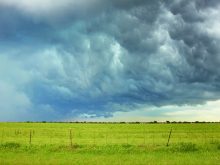Analyzing and managing financial performance can be both simple and complex, depending on what you’re trying to understand about it.
In it’s most simple terms, financial performance can be defined as sustained positive cash flow.
Positive cash flow comes from the profit being generated by the farm business, and that’s where the complexity comes in.
The complexity of financial performance is associated with understanding how profit is — or isn’t — being generated and then figuring out what to do to improve it. Other things such as multiple organizational structures and multiple enterprises can significantly add to the complexity.
Read Also

Proactive approach best bet with looming catastrophes
The Pan-Canadian Action Plan on African swine fever has been developed to avoid the worst case scenario — a total loss ofmarket access.
Financial efficiency is defined as the ability of a farm business to use its resources (inputs) efficiently.
Profit is affected by the financial efficiency of the farm. When profit margins are wide, there is usually strong cash flow. Often, when times are good (high profit/strong cash flow), less attention is paid to the detail of managing financial efficiency.
But what about when times aren’t as good (low profit/weak cash flow)?
Three groupings of financial efficiency categorize expenses to yield margins and ratios:
- production expenses (fertilizer, chemical, seed, crop insurance, feed, veterinarian services)
- operating expenses (fuel, repairs and maintenance, custom work, labour, supplies, freight)
- overhead and administration expenses (all fixed expenses other than interest and amortization/depreciation)
The groupings are subtracted from gross revenue (sales) to create margins. The margins are divided by the gross revenue to create ratios, which measure how efficient a farm is at generating a return on the investment being made in the inputs.
Without grouping the expenses and calculating efficiency ratios, how does a farmer begin to know where to look to see where improvements could be made? Overall profit may be less than desired (low profit/weak cash flow), but what to do about it?
Managing expenses is one way to improve profit. It helps to know which expenses should be looked at first. There aren’t typically easy, “home run” type solutions to managing costs as a way to improve profit. It’s more a function of zeroing in on areas that, with some attention, can provide the greatest benefit.
I’ve found that the more financially efficient farms do a much better job of managing costs through each of the expense groupings. There is less variance from farm to farm when looking at the margins after production expenses are subtracted from gross revenue.
The variance widens significantly as the operating expenses and then the overhead and administration expenses are subtracted. In other words, some farmers are much better at overall cost control.
At one of the peer group meetings I attended recently, farmers discussed how they would manage sustained narrow margins. Some really good ideas arose.
Many farms reported lower profit margins last year. When I talk to farmers in those situations, one of the exercises is to compare expenses from year to year. Many will have increased, especially over the past five years. What to do about it?
I think it starts with budgeting.
If these farmers had budgeted each expense for 2017, they could look at what the actual expenditures were compared to what they had originally budgeted. Large variance would indicate a need to understand why the actual values were that much higher and then determine what could be done to reduce the expenses for 2018 and future years. This is far more valuable information than simply comparing year over year costs.
The real benefit from the budgeting exercise comes from looking at actual to budgeted values throughout the year — and not just at year end. Quarterly is generally adequate. Monthly is better.
These in-year actual to budgeted comparisons identify variances that a farmer can use to make adjustments through the year — with the goal being to use cost control to improve year end profit.
This all requires processes, effort and discipline. When times are good there’s less urgency. But when times aren’t as good, it’s a different story.
Terry Betker is a farm management consultant based in Winnipeg. He can be reached at 204-782-8200 or terry.betker@backswath.com.
















